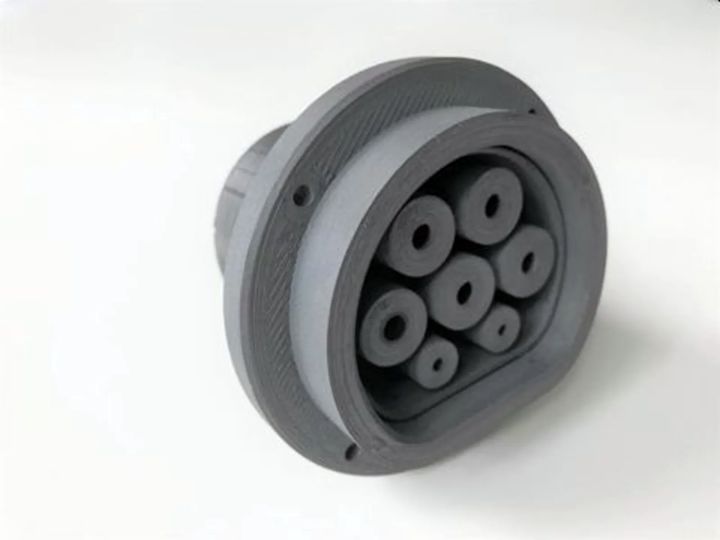
The chemical company LEHVOSS Group announced the introduction of a new 3D printing filament with flame-retardant properties. The high temperature polyamide has ceramic fillers to help it achieve a high enough thermal stability to retard very high temperatures without losing its structural stability.
Users can 3D print with the new filament, LUVOCOM 3F PAHT, and build flame-retardant components with layer thicknesses of .4 millimeters. These components will meet the guidelines for Safety of Flammability of Plastic Materials for Parts in Devices and Appliances, known as UL-94 V0. According to the company, this standard was achieved on an affordable desktop printer. As an example, they used an Ultimaker S5 3D printer to print flame retardant components that achieved UL-94 V0.
The filament is compatible with similar Fused Filament Filament (FFF) desktop 3D printers. However, the CURA marketplace already has printing profiles for the Ultimaker S5, while profiles for the Ultimaker S3 are underway.
There is no special temperature-controlled print chamber required to heat up the filament. It can also be used in concert with other materials, HIPS, or High Impact Polystyrene. HIPS is a support material generally used in combination with ABS filament. It dissolves after printing using d-Limone, eliminating the need to remove support material after a part is finished 3D printing. The new material can also be used with polyvinyl alcohol support material (known as PVOH, PVA or PVAl), a synthetic polymer that dissolves in water.
Manufacturers using 3D printer to build electrical components might appreciate access to a practical filament with thermal insulation and flame-retardant properties of the new material from LEHVOSS Group.
Read more at ENGINEERING.com
